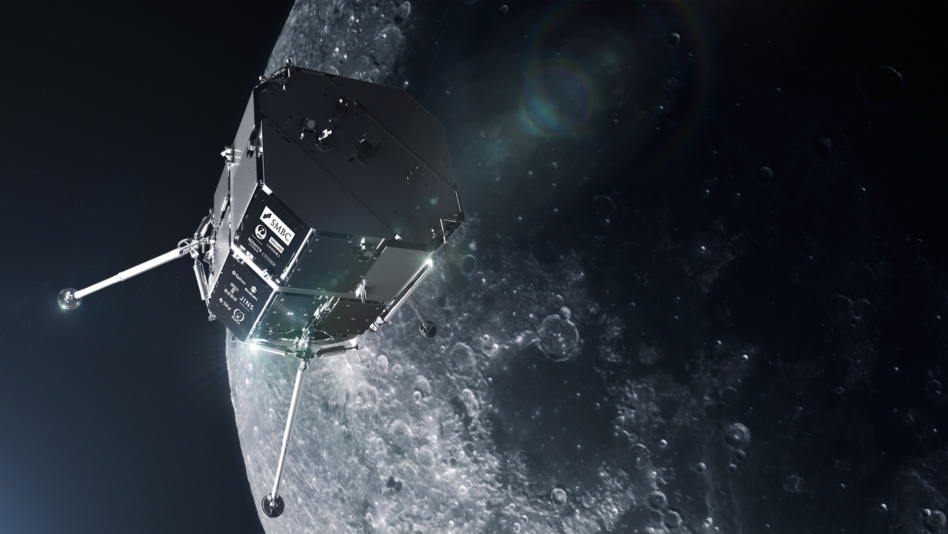ispace’s Hakuto-R Mission 2 ended abruptly on June 6, when its RESILIENCE lander lost telemetry 193 m above the lunar surface while traveling at 42 m/s.
Newly released imagery from NASA’s Lunar Reconnaissance Orbiter revealed that ispace’s lander did indeed reach the surface of the Moon on the company’s second lunar landing attempt, leaving a sizable crater as evidence of its achievement.

Same same, but different: RESILIENCE performed flawlessly during its four-and-a-half month journey to the Moon, hitting all of its milestones between launch and lunar orbit insertion—only to fail during its final descent.
A two-and-a-half week internal investigation revealed that the lander’s Laser Range Finder (LRF) was likely to blame for the high-speed collision with the lunar surface.
- During descent, the LRF was delayed in giving accurate measurements of the lander’s distance from the lunar surface—due to lower reflectivity of the surface itself, reduced performance due to degradation in-flight, or the high speeds of descent.
- The inaccurate LRF readings ultimately caused the lander to decelerate slower than planned, resulting in an impact with the surface while traveling at a speed of over 50 km/h.
While RESILIENCE ended in a similar way to the company’s first mission in 2023, the causes behind the second crash landing were entirely new. In 2023, faulty software contributed to an incorrect estimation of the lander’s altitude, while this year the crash landing was the fault of faulty hardware.
The LRF used on Mission 1 came from a supplier that stopped manufacturing in-between missions, so the LRF on RESILIENCE was flying for the first time.
No more flying blind: Ultimately, the ispace team determined that its failure led from the choice to fly blind. As with the first mission, the lander had no visual sensor to determine its distance from the surface.
On future missions, the next of which is scheduled to launch in 2027, the company will add more landing sensors—potentially adding LiDAR to the mix—to bolster their telemetry readings during descent.
For missions three and four, the company has committed to multiple corrective actions:
- ispace will increase the number of sensors used for landing, and will improve its selection and testing processes of these sensors.
- The company will create an external review task force leveraging experts from agencies such as JAXA and NASA.
- ispace will also work more closely with JAXA on technical aspects of future missions, and has signed an MOU with the agency to collaborate on development of future landers.
These changes are expected to add ¥1.5B ($10.3M) to the development of missions three and four, but should have no impact on the timelines for those flights, nor on the financial bottom line of the company overall, according to CEO Takeshi Hakamada.



